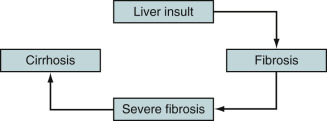Physical Address
304 North Cardinal St.
Dorchester Center, MA 02124
Physicians have long used the technique of palpation in the clinical setting. The underlying principle of palpation lies in the ability to feel stiffer tissue in the background of softer tissue when pressed (palpated). Ultrasound brings this concept to the imaging platform wherein the deformation caused by a force can be imaged, and that deformation can be quantified either visually or quantitatively. Pathologic tissue in any organ is usually stiffer than normal healthy tissue, and thus the technology has a wide range of applications.
Strain elastography (also known as real-time elastography) uses B-mode imaging as the only ultrasound technique. In this technique, the force applied over tissue is very similar to that of palpation, wherein the ultrasound operator applies force over the tissue of interest using the ultrasound transducer. This applied force causes deformation of the tissue, which can be visualized with ultrasound. Given the inherent association of operator-dependent applied nonquantifiable force, strain elastography is significantly affected by interobserver and intraobserver variability.
Shear wave elastography (SWE) is a technique that uses acoustic radiation force to induce microscopic tissue movements, producing tissue shear waves. Depending on whether the movement of the tissue itself is measured or whether the speed of the shear waves is measured, the technique is classified either as acoustic radiation force impulse imaging or SWE imaging. Given that the acoustic radiation force is quantifiable and constant (not observer dependent), both deformation force and tissue deformation are known in these techniques. Quantitative estimates of tissue stiffness, expressed as Young's modulus or shear wave velocity, can be obtained.
Elastography of the liver has been predominantly used for estimation of liver fibrosis in the setting of diffuse liver disease and for the noninvasive estimation of portal hypertension.
The prevalence of diffuse liver disease in the United States is estimated to be as high as 14.78%. In 2010, cirrhosis secondary to diffuse liver diseases resulted in an estimated 49,500 U.S. deaths and 1.95% of all global deaths. Diffuse liver disease has several causes, including hepatic viral disease, alcoholic liver disease, nonalcoholic fatty liver disease, and autoimmune hepatitis.
Regardless of cause, chronic diffuse liver disease follows a common pathophysiologic pathway of fibrosis to severe fibrosis and eventually cirrhosis ( Figure 5-1 ). The cost of managing and treating cirrhosis is extremely high and often requires liver transplantation.

The goal of managing diffuse liver disease is to prevent progression to cirrhosis. Therefore, reliable liver fibrosis staging is necessary to meet this goal. Unfortunately, no conventional imaging modality (i.e., ultrasound, computed tomography [CT], or magnetic resonance imaging [MRI]) has shown good sensitivity or specificity for diagnosing early or severe fibrosis. Most current imaging modalities have a high sensitivity for the diagnosis of cirrhosis, but this renders the goal of management ineffective.
Liver biopsy currently remains the gold standard for estimation of liver fibrosis. However, liver biopsy has a number of limitations: (1) invasiveness with an estimated mortality rate of up to 0.13% and a postprocedure pain rate of up to 63.9%, (2) cost, (3) interobserver variability, and (4) sampling error (only 1/50,000th of the liver is sampled).
Become a Clinical Tree membership for Full access and enjoy Unlimited articles
If you are a member. Log in here